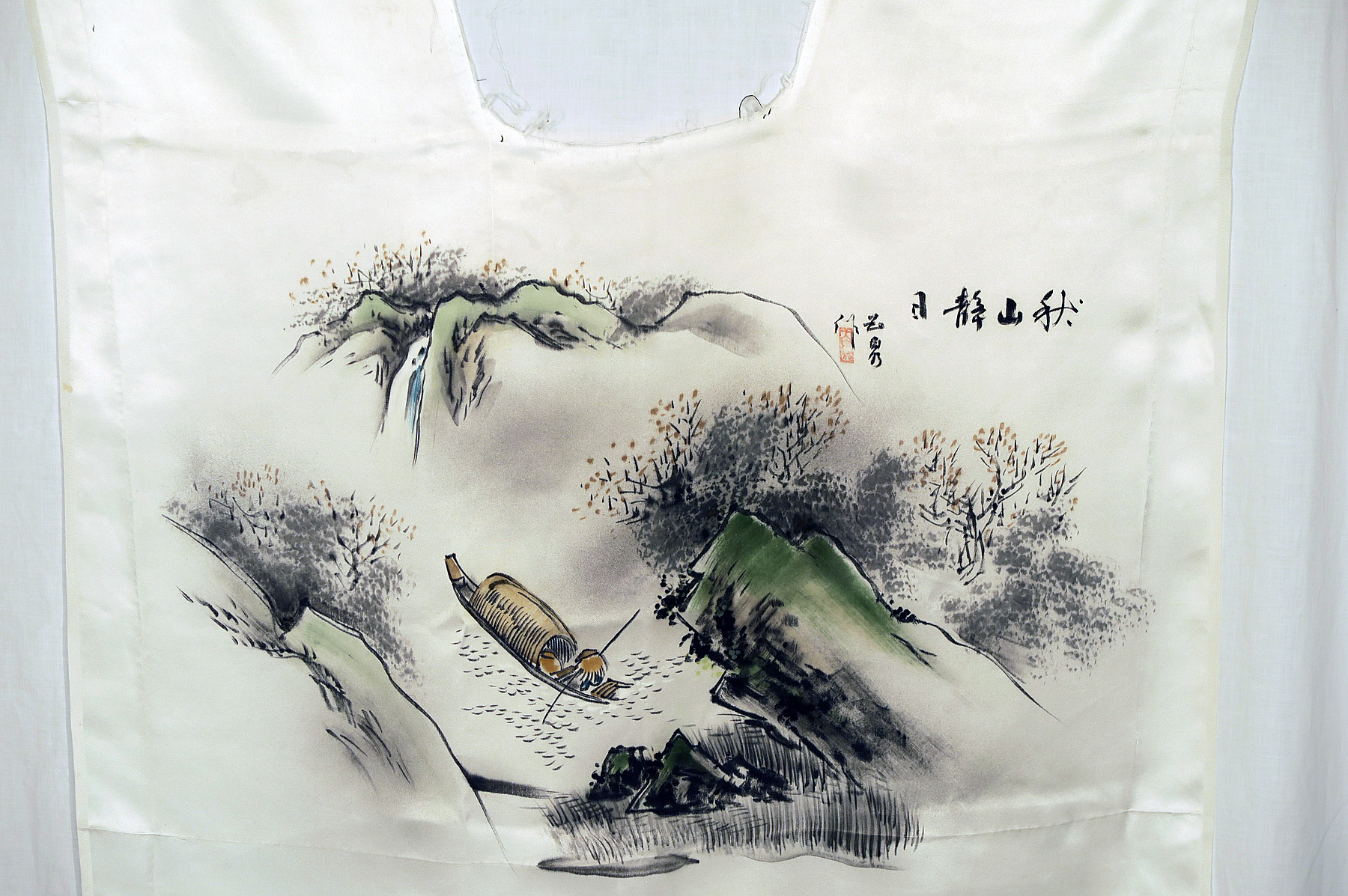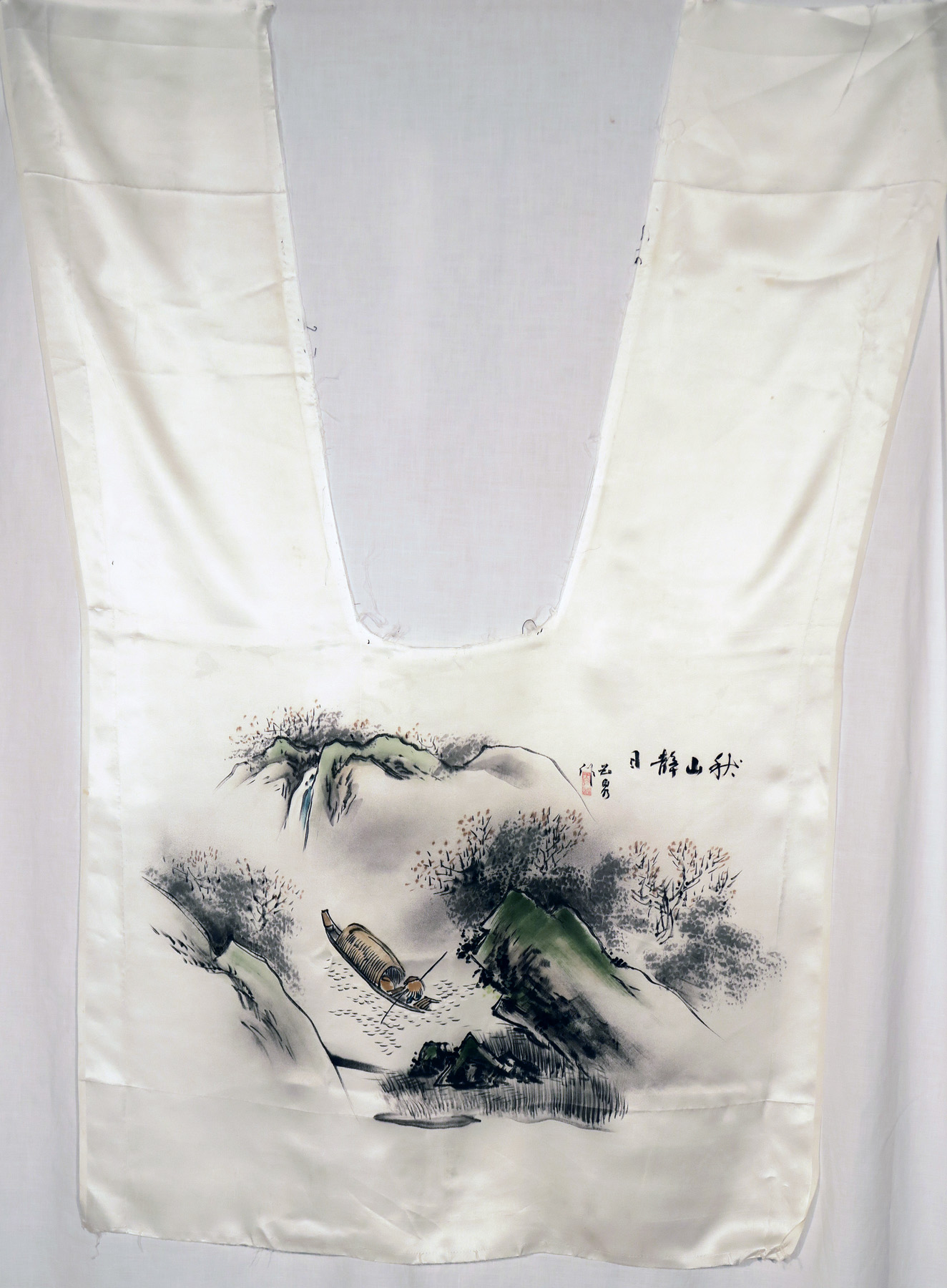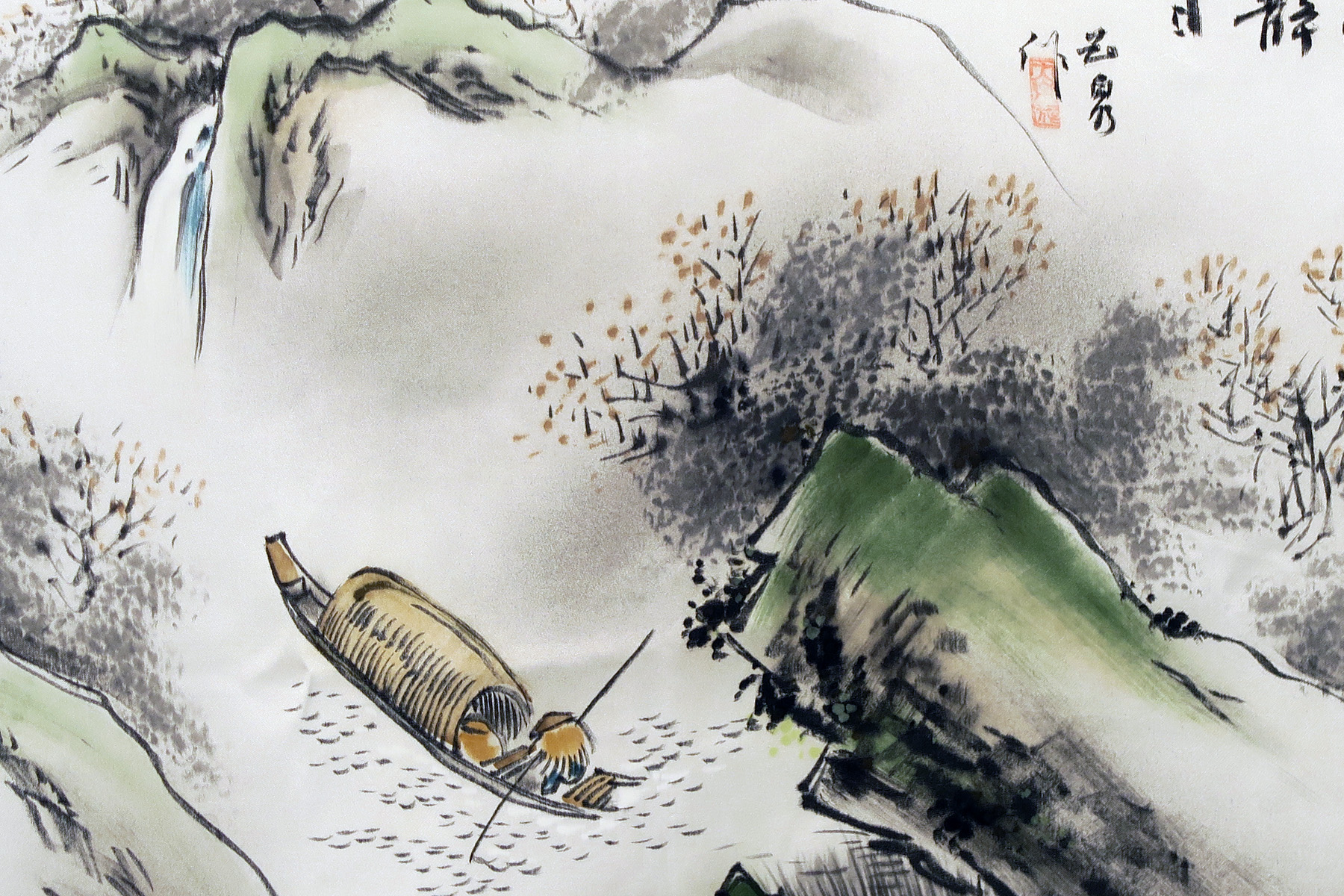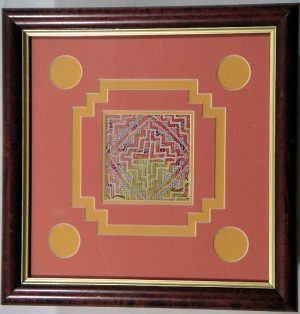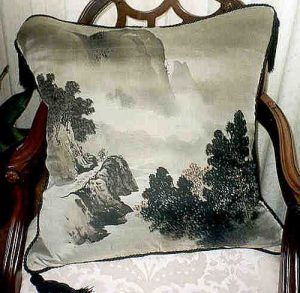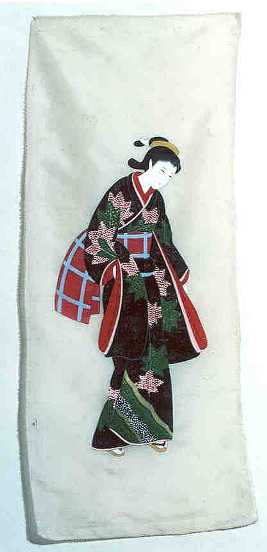Description
This exquisite landscape scene was the hidden portion of a Japanese Man’s Formal Topcoat or Haori which was required to be worn by the nobility for formal occasions in Japanese society…a tradition that continues to this day. The secret of the Haori was the hidden artwork on the inside back lining panel. When the full garment cannot be preserved, one seeks to save the inner back panel for its artistic and symbolic value. The lining panel of each Haori was commissioned by its owner as an individual work of art, incorporating symbols of significance to the owner. Thus, this precious fragment displays the best of what was most important to an individual in Japan during the early 1900s.
The original garment was handwoven of heavy satin silk, while the interior artwork consists of an unusual rendering of a dramatic landscape scene created through the Rice Paste Resist (“Tsutsugaki”) process. This technique required that each color be applied separately, while all the others were painted out in the rice paste. Each time a new color was added, the rice paste had to be removed by soaking it out over and over again in the local river water and then reapplying it. This was a long, tedious and labor intensive process.
Free style patterns, such as this one, based on natural phenomena are often the most recognizable as being distinctly Japanese, as their reverence for nature is part of their heritage and traditional Shinto Religion. Several of the most common of these patterns incorporated within this intricate scene are the small Covered Boat (“Kobune”), whose occupant poling downstream from the water fall (“Taki”), indicates the timing was early Autumn (“Shuki”)or “Fall,” a marvelous play on the symbolism of the garment. This was also a masterful presentation, pictorially describing the period in which this Haori could only have been worn: Autumn.
Within the Japanese tradition, everything worn or displayed carried layers of meaning, reinforcing the dating of this Haori to the Taisho Period in Japanese History. In that regard, dual symbolism such as boats in their artworks contributed to scenic effects as well as honoring a means of transport that brought people the necessities of life. While, at first glance, this pastoral scene appears idyllic, upon reflection, it contributes to a feeling of motion and perhaps the unknown purpose of the presentation. Coincidentally, this was a time in the outside world that witnessed the impact of Impression in art…a world with which the Japanese were becoming increasingly familiar. This dramatic vista has been signed by the artist and also stamped with his seal.
Antique Japanese textiles are among the world’s most virtuous examples of a craft elevated to an art form. To connoisseurs of fine art, these extraordinary pieces of fabric exhibit an artistic sensibility that is unique in the world.

